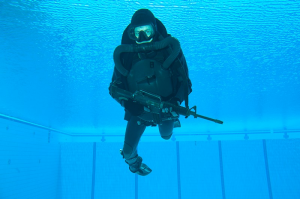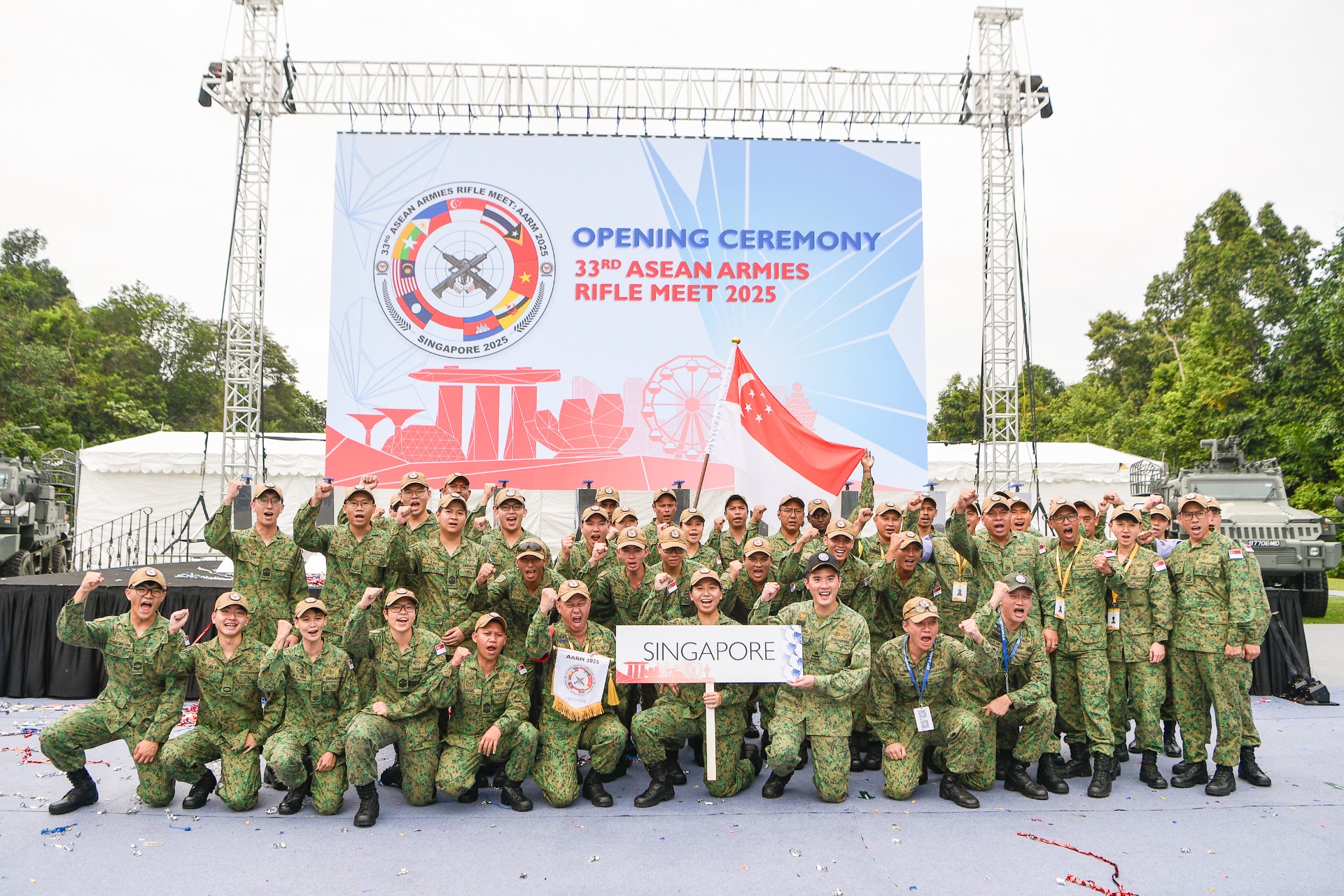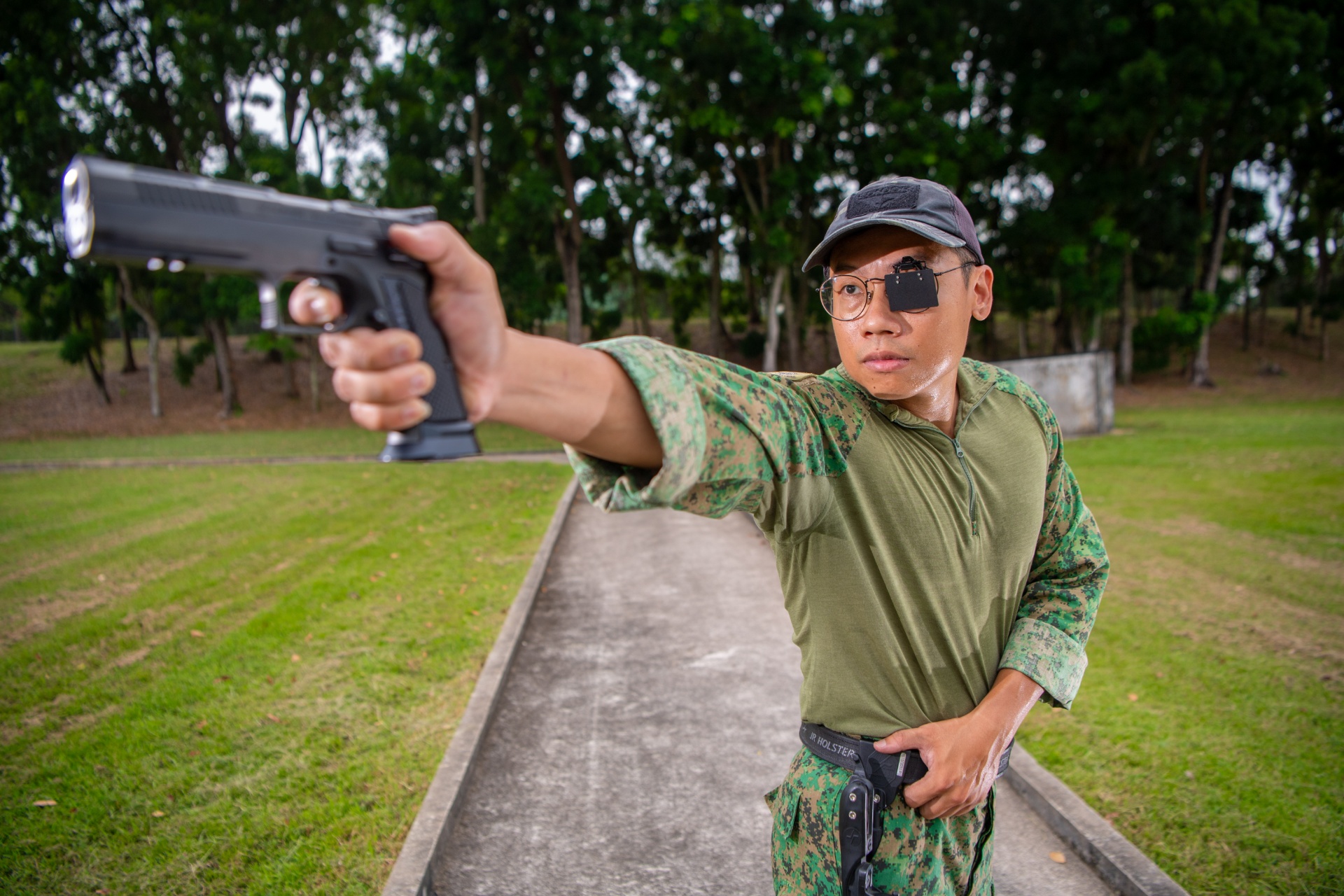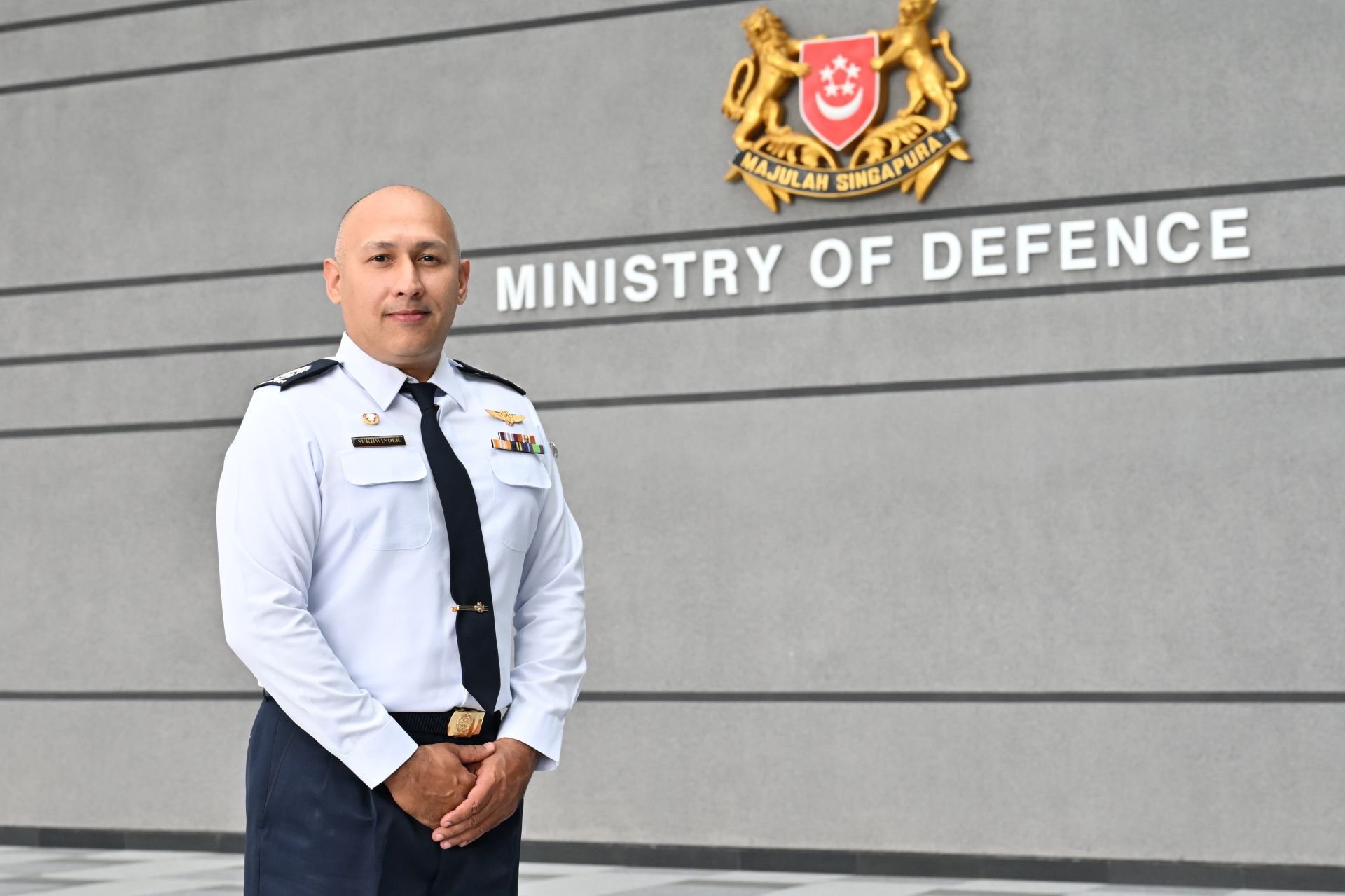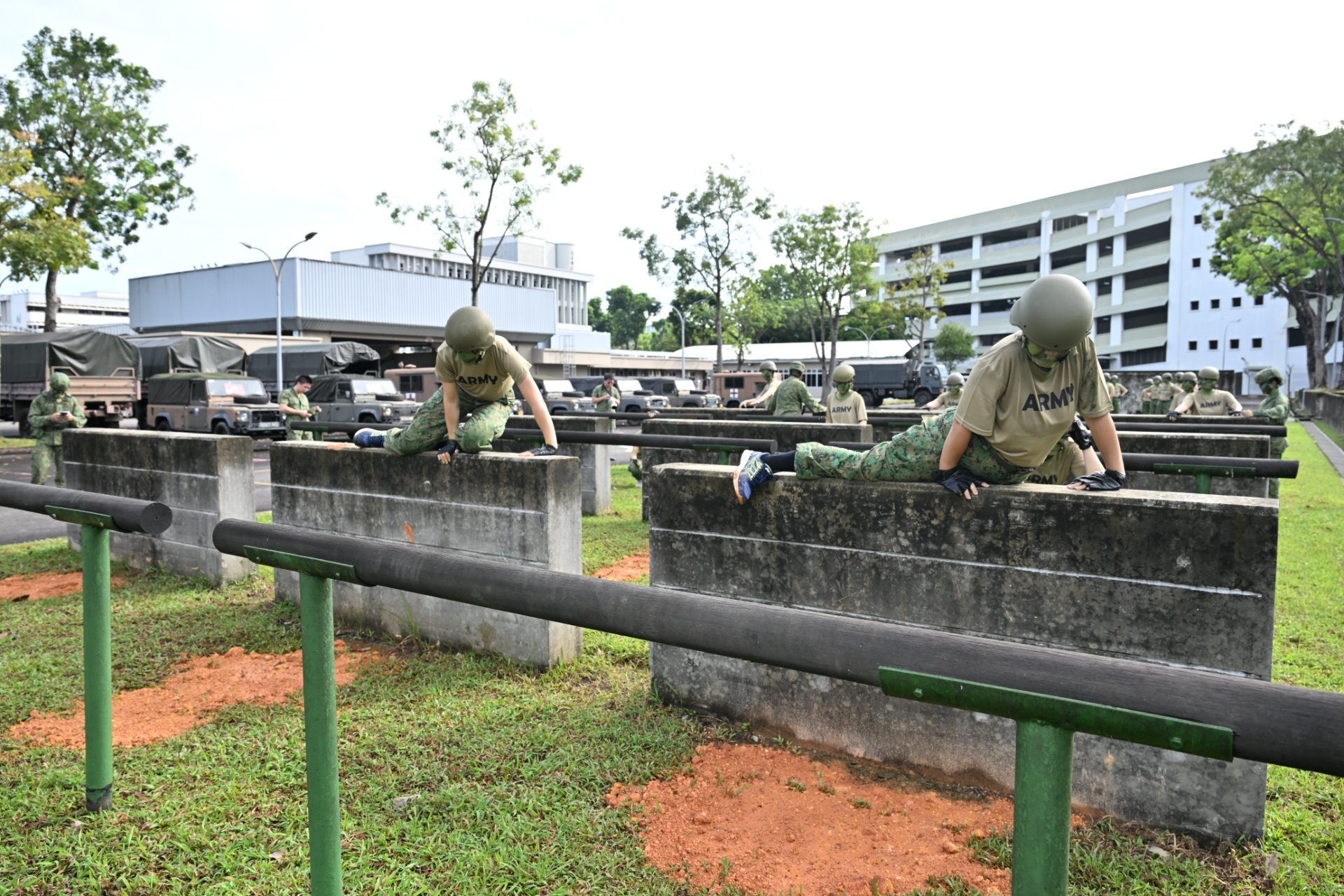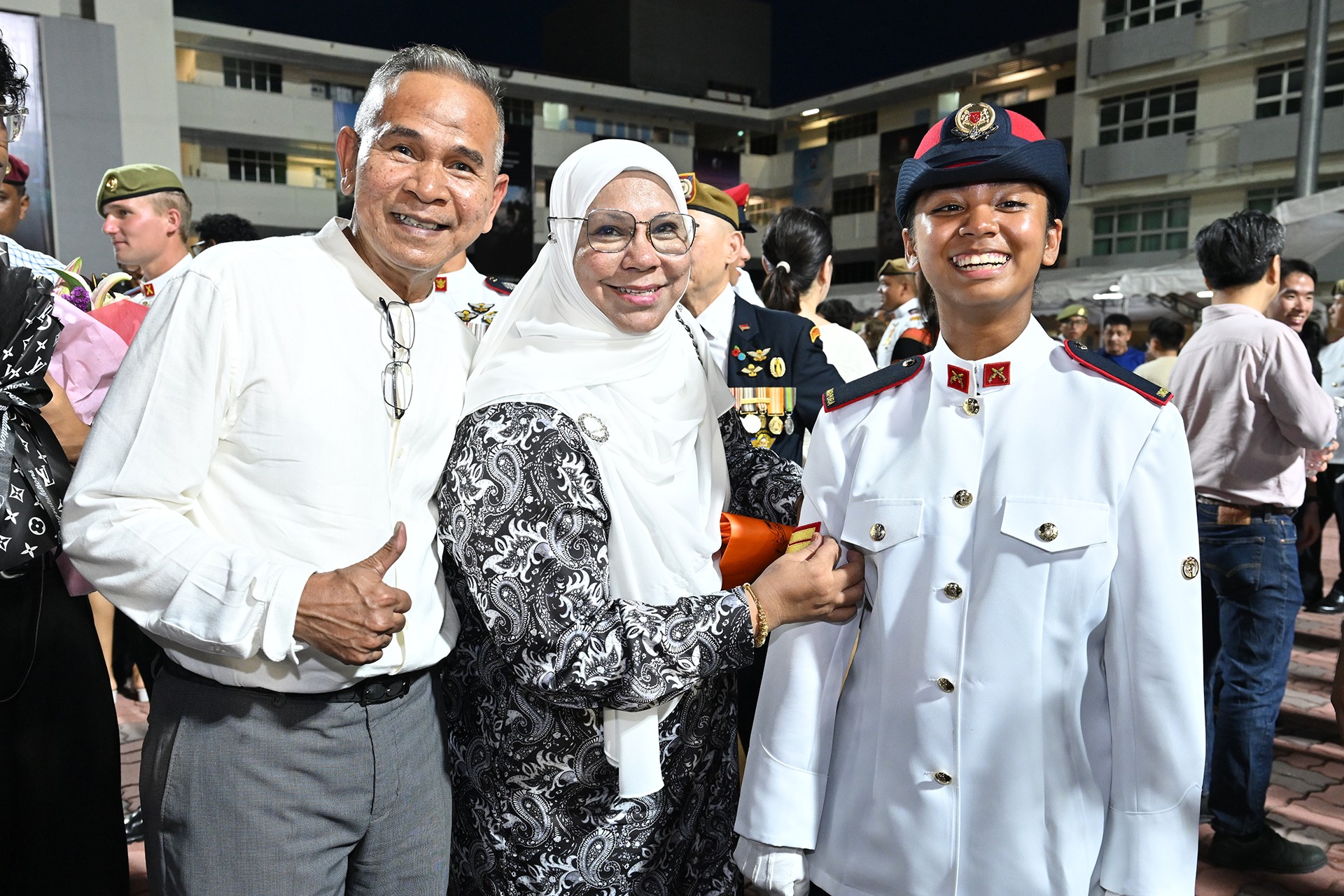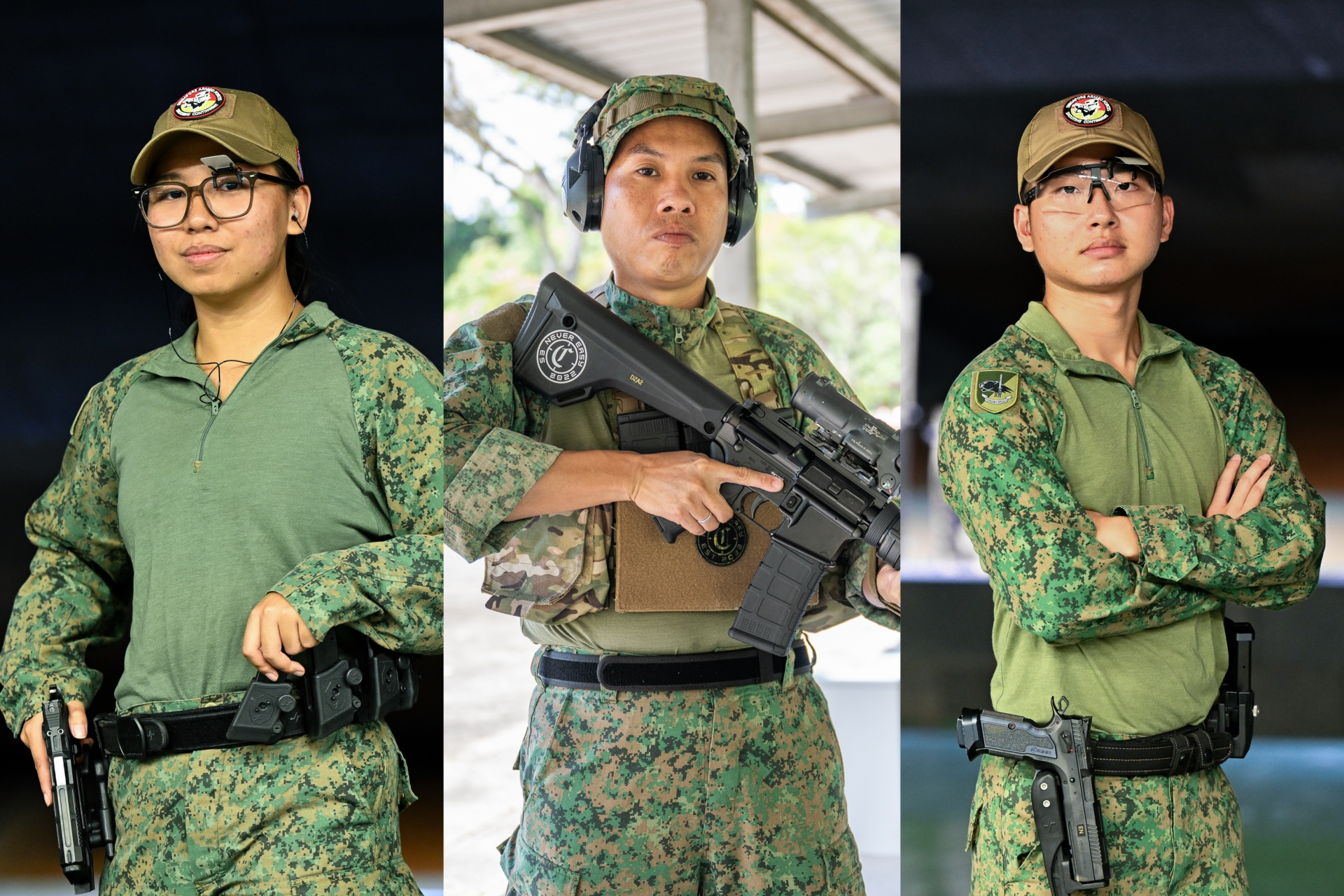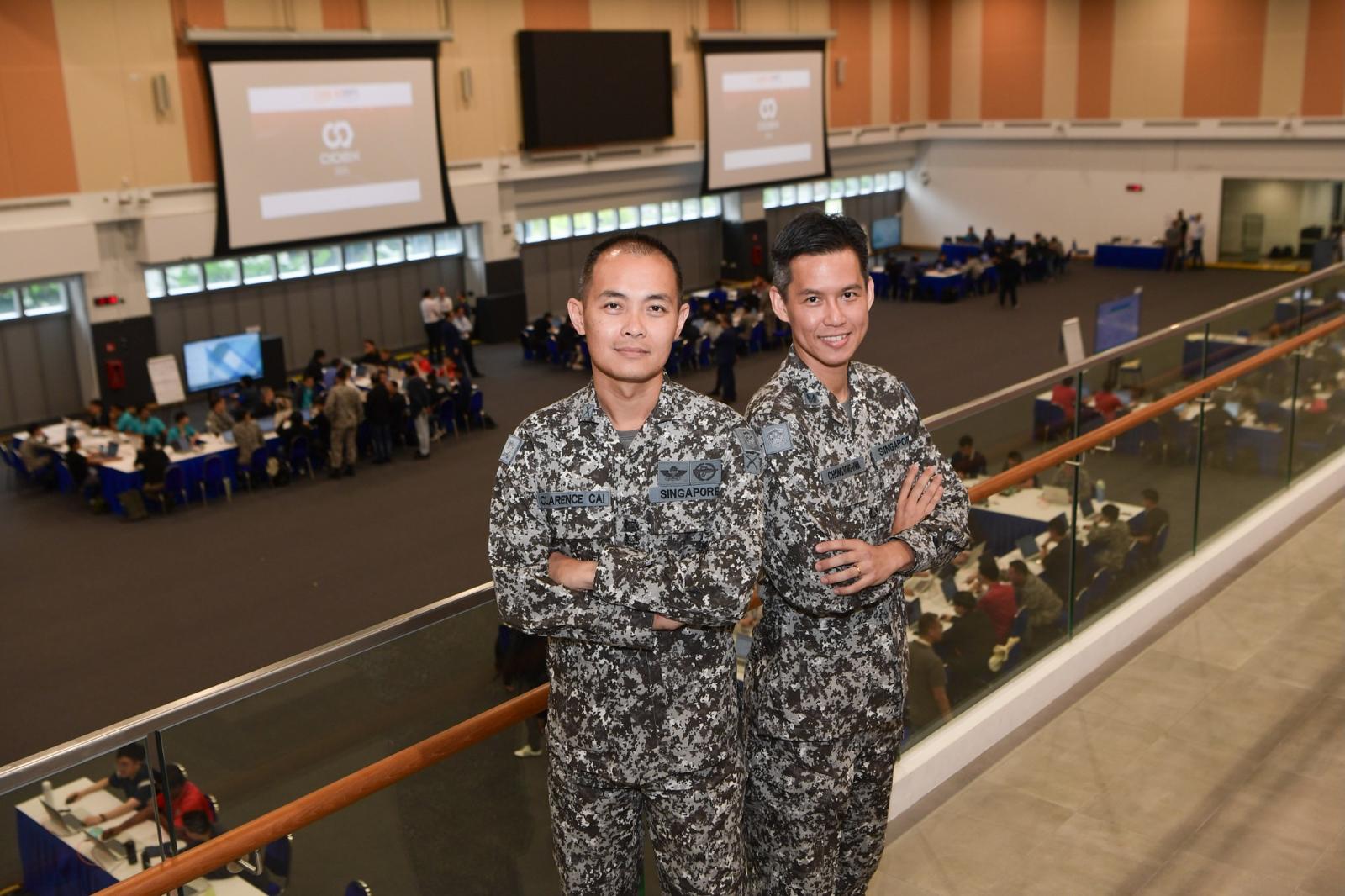ELITES OF THE DEEP
PHOTO // Chai Sian Liang & Chua Soon Lye
The Naval Diving Unit (NDU) demands nothing short of the best of its divers, regardless of the amount of pressure they are under on land or underwater. PIONEER checks out the unit and what it takes to be part of this elite force.
Choppy waters, rough winds and near-zero visibility. These are the conditions which naval diver trainees face during their training. Decked out in full military rebreather diving gear, they plunge into the waters off Sembawang Camp and begin their training mission.
Diving in pairs, they soon navigate to their target. Stealthily, they make their way towards it and plant their demolition charges. Moments later, the tower goes boom. Mission accomplished.
This is one of the simulated missions that trainees from the NDU go through during their 16-week Combat Divers Course (CDC). Far more rigorous than any civilian recreational diving jaunt, the course turns trainees into masters of basic military diving techniques and fighting-fit military divers.
"Other than diving techniques, we also train them in staying calm and handling pressure under harsh and stressful conditions as they are likely to operate in such situations," said 3rd Warrant Officer (3WO) Koh Kim Guan, Course Warrant Officer of the CDC.
These traits are important to military diving, where divers often have to operate in unfamiliar territories. Underwater - where movements we take for granted are difficult and life-sustaining oxygen is delivered only by the tanks on their backs - military divers are in their element.
Combat training
While the name "naval diver" suggests that they are able to operate only underwater, the truth holds contrary. "Ultimately, we aim to turn the divers into frogmen, who are adept on both land and at sea," said 3WO Koh.
Besides naval diving skills, the trainees are also equipped with basic infantry skills, such as rifle handling and tactical movement, which they learn during a nine-week Basic Military Training (BMT) course held in Sembawang Camp.
Additionally, those who sign on are exposed to more specialised land combat warfare tactics, such as small team tactics, as divers generally operate in small groups.
A typical day of training in NDU consists of physical training in the morning, followed by dives in the afternoon and, occasionally, at night. Furthermore, the trainees have to clear five fitness tests to be qualified as divers.
The five fitness tests, which are conducted multiple times, include the Individual Physical Proficiency Test (IPPT), a 2km sea swim, a sea circuit, a 6km run as well as the Diver's Fitness Test. The last four require trainees to complete the test within a certain timing. The trainees are also expected to pass these tests consistently in order to qualify as divers.
Naval diver trainee Specialist Cadet (SCT) Vighnesh Krishnan said: "These five tests ensure that we are doubly fit, both underwater and on land That's why we have to go through more hammering (term for hard training) during the course because divers need to be fit underwater or we won't be able to execute our missions effectively."
As for diving, training is conducted progressively. 2nd Warrant Officer (2WO) Ho Boon Kee, an instructor from Dive School, noted: "We must build up their underwater competence and confidence first, so that when things happen, they are composed underwater and do not panic and cause distress to their fellow divers."
Trainees start in the training pool where they learn the techniques and drills before heading out to the open sea. They also learn emergency drills, such as what to do when there is an unconscious diver and how to share their air supply when a fellow diver's air source is cut.
"If they can execute these drills properly, we can say that the divers will be able to bring their buddy up to the surface safely," said 2WO Ho.
To enhance the underwater confidence of trainees, drown-proofing and pool competencies, such as aggressor training, are also conducted in the pool.
To make sure that the divers execute their drills correctly and safely, a safety diver, who is usually an instructor, is always present underwater to observe them.
Off to the deep
After completing their pool training, the trainees transit to the open waters phase of training which includes confidence dives, circular searches and compass missions.
Underwater medics are always present on-site to deliver medical care and attention at the first instance. When more complicated medical procedures are required, casualties will be sent to the Naval Underwater Medical Centre, which is a short distance away from their usual dive training site.
Trainee pairs must know how to communicate with each other underwater and this is done through standardised hand signals and, at a higher level, simply by reading each other's body language.
"You can't make out what your buddy is saying underwater, so it's important to establish how to communicate before you dive," said trainee SCT Bryan Cheng.
"Adding on to that, if you don't tie down the details well and you stop in the middle of the sea to try and resolve any conflict, the current will push you away and it will steer you off course and mess up your timing."
During compass mission training, trainees work in pairs where one navigates using the compass while the other trainee holds the safety float. The objective is to hit a certain objective within the stipulated time frame. To ensure that each and every trainee is able to navigate, the roles of the navigator and float man are switched from time to time.
Pushing mental boundaries
What makes naval divers special is not only their ability to endure rigorous physical training, but also their ability to keep calm under immense mental pressure and harsh conditions.
For instance, in an activity to simulate chaos, the trainees' equipment is thrown all over the place and their bunks are all messed up. In this situation, they have to look for their lost equipment within five minutes.
This is often conducted randomly and usually after core activities like physical training or dives when they are already physically exhausted.
SCT Kenneth Yap said: "Sure it's frustrating, but when I think about the actual conditions which I might encounter on operational dives, I'm very thankful that our instructors get us accustomed to chaos. It makes us better divers who are able to keep our cool and maintain focus."
Fellow trainee SCT Blake Ng emphasised the importance of keeping composed as a diver: "We need to be decisive and make the right choices in fast-changing situations because down in the water, you simply don t have the luxury of time to think."
One for all, all for one
The CDC places great emphasis on the diver values of honour, integrity and, most of all, team spirit. This is especially so during the much-feared Team-Building Week (TBW), which is when the trainees will undergo tremendous physical and mental stress. "Most of the training during TBW seems impossible to accomplish but with teamwork and determination, most will be able to complete the tasks set out by the instructors," said 2WO Ho.
"I remember my own TBW experience. At first I thought that I would surely not be able to make it through, but somehow we all did it together. It's one of the defining experiences which all naval divers share."
As its name suggests, TBW aims to bond trainees together through an endless series of demanding and challenging activities, including Boat Physical Training (PT), Chow Runs as well as Cold Treatment (see sidebar The Final Week for details on the different training activities).
TBW is also characterised by a huge amount of hammering designed to build up the physical and mental resilience of trainees. It is the most important phase of training as all trainees have to pass it in order to become naval divers.
One of the activities that trainees go through during TBW is Boat PT, where they have to carry a boat weighing around 80kg in groups of eight. The instructors will then give them myriad tasks while hefting the boat, including running and tossing it as high as possible.
When running, the trainees have to keep pace with the instructor leading the run. To instil teamwork, the boats being carried must touch each other bow-to-stern.
"If one group of trainees or one trainee cannot keep up with the pace, we must slow down for him, encourage him and motivate him. Through such training, it's ingrained in military divers that the team is everything and there are no lone heroes," explained SCT Vighnesh.
Furthermore, if a trainee falls out during the PT, he will be placed in the boat, thus resulting in fewer people carrying an even heavier load. "Nobody wants to be the burden on his team-mates, and we all push ourselves together through the fatigue," said SCT Vighnesh.
Fellow trainee SCT Ng also described an incident which illustrated how the CDC has inculcated the values of teamwork and camaraderie in him.
"During a compass mission dive, my buddy line snapped. As I was in charge of navigating, I had to focus on the compass so I gave a signal to my buddy asking whether he was alright. However, after a while, I did not receive any response from him and I turned around, and then I realised he was gone.
"So instead of directly surfacing and returning to shore, I decided to stay underwater and find my missing buddy, and I found him eventually. None of us wanted to surface because we were told to go down as a pair and come up as a pair; you leave no man behind."
After passing out, the divers will either join the Underwater Demolitions Group where they specialise in combat diving or the Clearance Diving Group where they will be involved in more specialised support roles.
